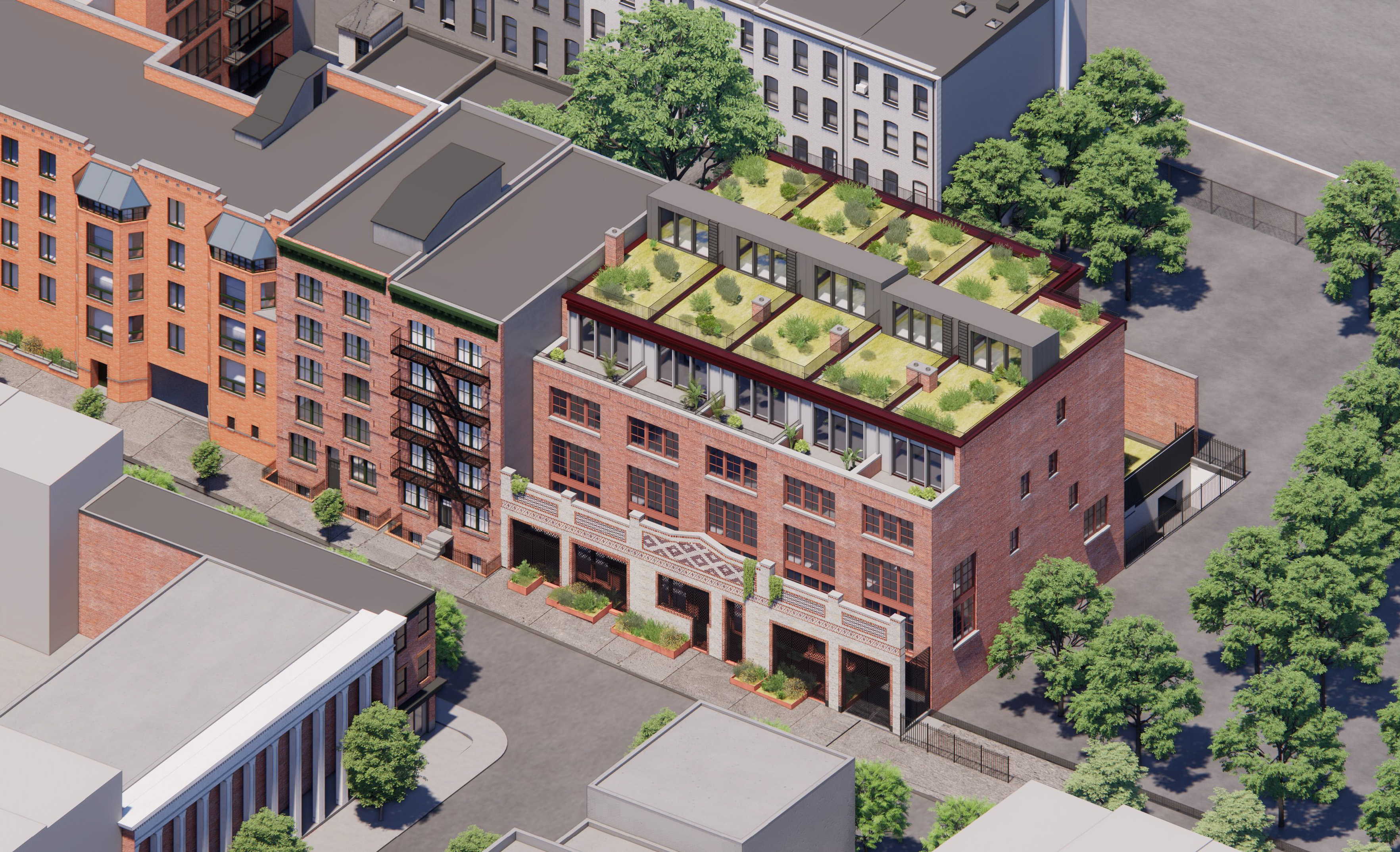Brooklyn's Top 50 Most Influential No. 31 - 40
[nggallery id=”24515″ template=galleryview] Every day this week, we’re going to count down Brooklyn’s Top 50* most influential people who have shaped Brooklyn neighborhoods by building new structures, preserving older ones, influencing property values and quality of life, speaking for thousands, or changing the course of developments, for example. We did 41-50 yesterday, so today it’s…
[nggallery id=”24515″ template=galleryview]
Every day this week, we’re going to count down Brooklyn’s Top 50* most influential people who have shaped Brooklyn neighborhoods by building new structures, preserving older ones, influencing property values and quality of life, speaking for thousands, or changing the course of developments, for example. We did 41-50 yesterday, so today it’s 31-40. Instead of listing everyone from Bloomberg to Bernanke, we mostly stuck with locals. Surprisingly still, by broadening our definition of influence beyond quantitative factors like real estate holdings and constituency, the toughest task was keeping the list down to only 50 (*So we cheated, there’s actually more like 65 people on the list, and it was still hard). Ranking them in order was also tough. In some cases we considered the type of entity the person represents, the potential impact of the project he or she is working on, and the extent of influence over time, distance and the number of Brooklynites affected. By all means, feel free to give us your two cents in the comments section. By the end of this week, we could have 200 people on the list!
Check out 31-40 below.
31. Bushwick Assemblyman Vito Lopez, head of the Housing Committee, is known as the most powerful Democrat in Brooklyn. Lopez made headlines by altering the city’s already controversial 421-a property tax abatement legislation into something that pissed off just about everyone (yet passed nearly unanimously in the Assembly and Senate); and by his odd attempt to seize Pfizer’s 15-acre manufacturing plant site in East Williamsburg via eminent domain so it could be turned into affordable housing. The 421-a changes in particular sparked a mad flurry of activity on construction sites as developers raced to get their foundations poured before the new, stricter rules were enacted this summer, while others opted to sell their sites, blaming the changes more than the failing economy. Still, backed by affordable housing advocates, Lopez has vowed to expand the stricter rules as they are reviewed next year.
32. As president of the Downtown Brooklyn Partnership, created in 2006 when numerous projects there (cough, BAM) still seemed lost in the cosmos of the “planning process,” Joe Chan presides over the redevelopment of the city’s third largest business district. To get the city’s sweeping plan realized, all totaling an an estimated $9.5 billion in public and private investment, Chan coordinates between private developers and city agencies that have jurisdiction on everything from plantings in Boerum Place to Flatbush high-rises. To fill those towers, he works publicly to sell the area’s future, which still largely looks like a bunch of construction pits. Conversely, many existing small business owners have complained they’re left out in that march toward the future.
33. As President of the Brooklyn Navy Yard Development Corporation for the past two and a half years, Andrew Kimball has overseen the 300-acre industrial complex’s biggest boom since its primary use was actually building and repairing ships. Nearly every square foot of available space is leased to over 200 manufacturing and creative firms; several new projects and proposals are underway, most notably a potential expansion of Steiner Studios to the abandoned Naval Hospital Campus and three other sites; and the yard is now on the path to green-ness. Despite the Navy Yard’s good track record in rehabbing historic structures and the addition of a 25,000 square-foot museum, Kimball’s legacy among preservationists may hinge on his strong opposition to preserving Admirals Row, the group of ten Civil War-era houses along Flushing Avenue whose fate still hangs in the balance.
34. Michelle de la Uz heads the Fifth Avenue Committee, which has developed 600 units of affordable housing in Brooklyn and is building 400 more, including at Gowanus’ Public Place in conjunction with The Hudson Companies, and manages nearly 400 units. The group also launched Families United for Racial and Economic Equality (FUREE). De la Uz is well-known on the panel circuit for speaking on issues affecting affordable housing, and in the activist community for her opposition to Atlantic Yards based on practical grounds; that creating 2,500 units of affordable housing would be cheaper if done by a non-profit developer.
35. Veronica W. Hackett, CEO of The Clarett Group (and one of the few women leading the industry), forged new ground in Fort Greene by building the 30-story Forte on the edge of the BAM Cultural District. While the triangular building works its way through the sales cycle, having already suffered price cuts, Hackett is finding out first-hand how proprietary Carroll Gardens residents feel about development in their neighborhood as Clarett moves ahead with plans for 340 Court Street on the site of the former International Longshoreman’s Association Building. Meanwhile, Clarett has started construction on what would be the tallest residential building in Brooklyn, 51 stories, at 111 Lawrence Street in Downtown Brooklyn.
36. Halstead Property director of development marketing Bill Ross has been involved in the Brooklyn real estate for almost three decades, and was instrumental in expanding Halstead’s reach into the market by selling them his own Brooklyn Heights-based firm, William S. Ross Real Estate, four years ago, when it employed 25 agents at the time. In his current role, he’s helped big-time developers like Walentas and Stahl Real Estate assemble air rights so they can make their buildings taller, and determined the unit make-up and pricing at projects like Toren. Ross also sold the Carlton Mews site in Fort Green, and Toll Brothers’ land in Gowanus.
37. Remember how much attention Red Hook received when Barbara Corcoran bought a house on Van Brunt Street back in 2005? Or when she stepped up to the plate in Stuyvesant Heights last month? Nuf said. The woman may not be running day-to-day ops at her eponymous firm anymore, but when she speaks (or acts), the market pays attention. Meanwhile, Corcoran’s man behind the wheel in Brooklyn, Frank Percesepe, has overseen the agency’s growth from a storefront on Montague Street at the start of the decade to the dominant residential player in the resale market with over 150 agents under his command. In the process, the firm’s aggressive pursuit of gentrifying neighborhoods like Bedford Stuyvesant and Clinton Hill has broadened their visibility and appeal while accelerating some of the processes of change.
38. In exchange for her unwavering support of Atlantic Yards, New York ACORN executive director Bertha Lewis negotiated a landmark agreement with project developer Bruce Ratner to include a higher percentage of affordable housing in the project, which she notes is one of the few instances groups representing low-income New Yorkers were able to sit at the table with a big-time developer. Like it or not, her support also helped fan a class and race war over the project, charging that the project’s white opponents are insensitive to the needs of her “community.” Plus, not just anybody gets to kiss Mayor Bloomberg on the lips.
39. There’s the Bloomberg and Co. vision of a newer, taller, shinier borough, and then there’s those who’d like to slow the [heck] down and preserve a little more of the old Brooklyn. For the latter, urban planners like Brad Lander, City Council candidate and director of the Pratt Center for Community Development, and Tom Angotti, author and Director of the Hunter College Center for Community Planning and Development, provide innumerable expertise, research and advocacy, giving them a fighting chance of winning compromise in their favor.
40. “Buyer Beware” (and real estate reporting) became enormously easier for the average Jane and Joe when Matthew Haines launched PropertyShark.com four years ago, and who knows how many transactions have been influenced by the juicy tidbits contained within? The growing website has since teamed up with heavy-hitters Trulia and Corcoran as it expands its services to include listings, market reports, and even match-making.





I had no idea people were still alive named “Bertha”.
Poor soul.
i’ll second that, although I get why it wouldn’t be kosher…based on the NYT photo of you this summer, you’d certainly be the cutest…
My point is this…
Of course, it’d be a lame move to include yourself but truth be told, for everyone that loves or hates you, you’ve certainly influenced municipal politics.
Lets put you at #51 and call it a day.
Oooh, awkward!
I feel like a shameless asskisser for saying this but wouldn’t -you- fit in this Top 50 somewhere, Stoner?
this is a cool posting, glad you’re doing it. reading various blogs about the city, and hearing these peoples’ names, it’s great to know who they actually are. thanks! (crossing my fingers hoping i make it in the top 10!)
-rob